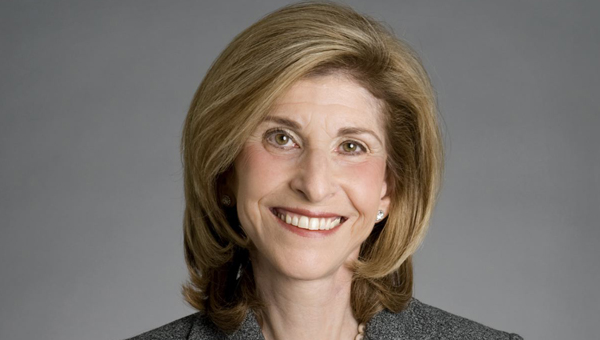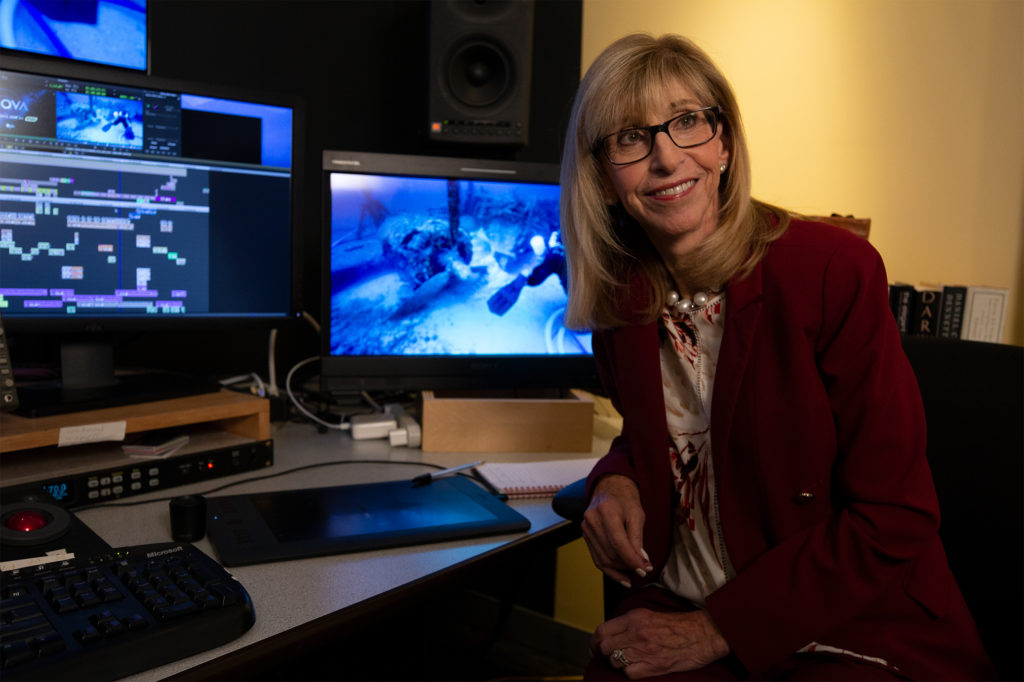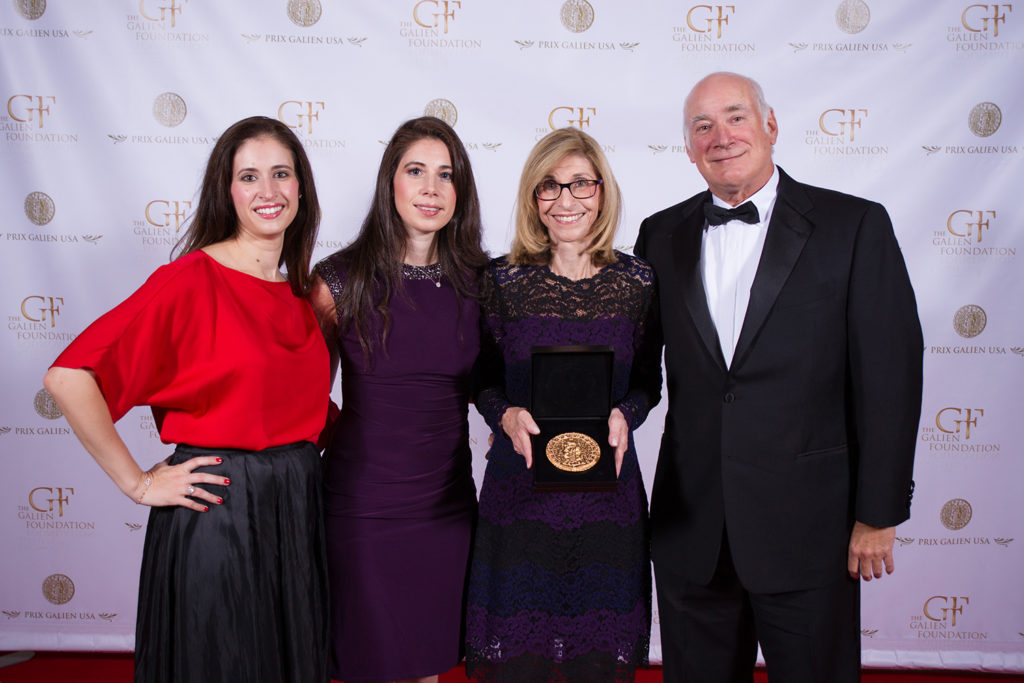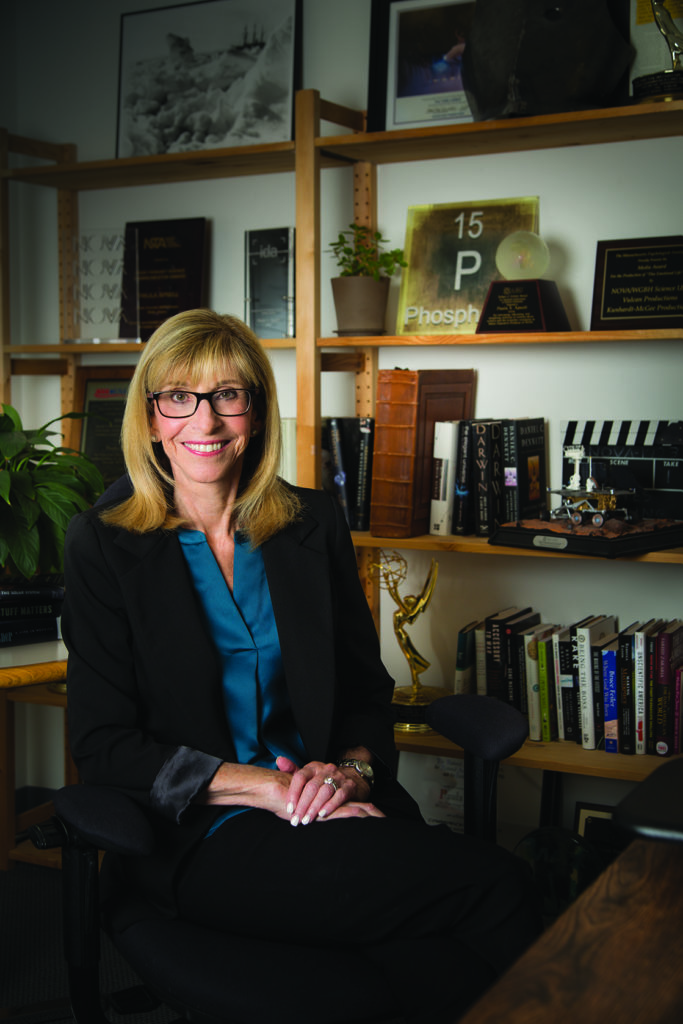Lifetime Achievement Award: Paula Apsell

The force behind NOVA, the most watched primetime science series on American television, is senior executive producer Paula S. Apsell, whose enthusiasm for science and excellence is the foundation of its in-depth, thoughtful programs on a range of science topics. Honored with multiple Emmys (and two CINE Golden Eagles), Apsell has devoted her professional career to building what has become a living repository of science stories that inspire and educate.
“I have watched her progress over more than 30 years and continue to be amazed at the way she steers the great ship that is NOVA,” says Robert M. Hazen, senior staff scientist of the geophysical laboratory at the Carnegie Institution for Science. At the Smithsonian Institute, Kirk Johnson, Sant director of the National Museum of Natural History, praises Apsell’s persistence and high standards. “She smashes through the barriers to get funding and runs the teams hard to get excellence,” he says. “She has zero limits to her energy. Knowing how hard I work on one of these programs, it stuns me that she works on several of them simultaneously.”

Apsell’s interest in science started in high school and continued into college, but after graduation she first looked for a job in social work. Lost in Boston after a job interview, she found herself in front of WGBH’s headquarters and, on a whim, went inside and asked if there were any openings. There was — for the job no one there wanted to do: the station’s log typist. “It was a job that gave entry level a whole new meaning,” recalls Apsell. “I had to document every single piece of content every hour of every day. It was incredibly tedious made worse by the fact I was a horribly inept typist.” But the job had its benefits, and Apsell made the most of it. She developed a children’s program, The Spider’s Web, and produced it as a volunteer. It became a surprise hit, which led her to becoming an on-air newsreader and then the station’s state house reporter.
In 1975, she took a step backwards to move forwards, switching from radio to TV by becoming a production assistant for NOVA, a joint production of WGBH, PBS and the Corporation for Public Broadcasting, then in its second season. “I can’t tell you how innovative it was,” says Apsell. “[Creator] Michael Ambrosino was an incredible visionary. He knew a science series was a good idea and persisted in the face of enormous skepticism, from people who thought it was too intellectual and that no one would want to watch it.”

Switching to TV was a learning curve, and Apsell’s first job was to schedule a three-week shoot for “The Plutonium Connection.” Her next step up the ladder was the chance to produce her own NOVA episode, “Death of a Disease,” about the eradication of smallpox, followed shortly thereafter by episodes on artificial intelligence and genetic engineering, hardly hot topics in the 1970s. “I waited for years for another opportunity to do a film on AI, but there just didn’t seem to be enough progress in the area until IBM created Watson,” she says. “Then we did another one, ‘Smartest Machines on Earth’. It’s been an amazing experience to follow AI and genetic engineering from the time they first emerged and now see so much progress and so many breakthroughs to become the crucial fields they are today.”
Ask Apsell what her favorite episodes are, however, and she demurs. “I love all my children equally,” she says. “As a senior executive producer, I touch every long-form documentary. Even if I’m not initially passionate about the topic, in the process of helping to shape it, I kind of fall in love each and every time.”
She doesn’t always go on the shoot, but when she does, she knows what to do. “I’m still an amazing PA,” she says wryly. “As a PA, I brought people amazing food because I know how it helps motivate people, and I still bring everyone lunch.” Apsell’s creative input, however, is much more foundational. Johnson — who has participated in “Ice Age Death Trap,”
“Making of North America” and “Day the Dinosaurs Died” — notes that working with Apsell is “definitely an interactive process of creation.” “A lot of producers are more used to delivering a final product, but Paula and her team are really striving for excellent production and accuracy,” he says. “They pay attention to everything.
When Apsell does goes on location, she is fearless, once hiking a narrow ridge above a 500-foot ravine and then climbing a 50-foot metal ladder pinned to a cliff face to get into a cave full of bats for the episode “Ancient Refuge in a Holy Land.” At the University of Hartford, professor Richard Freund, who is also director of the Maurice Greenberg Center for Judaic studies, worked with Apsell on two NOVA episodes, and recounts her trek at the Dead Sea in Israel where, in 2000, he was excavating the remote, barely accessible cave that held the bones of Jews escaping the Romans and a cache of ancient letters and documents. “Needless to say, NOVA sent their very toughest crew into the cave with us, which not only was full of bats, but had little air,” Freund recounts. “Its three chambers were only accessibly by wiggling through small breaks in the limestone roof.” Apsell wanted to see it all for herself. “Most producers would have just watched the dailies,” says Freund. “No, she wanted to experience it. It was a place that most climbers never get to, but we arranged for expert climbers to accompany her all along the way.”
In 2016, Freund and Apsell again worked together on an episode on the “Holocaust Escape Tunnel,” where, in the forests of Lithuania, Jewish prisoners were able to dig a tunnel to escape. “She not only came, but took on the added burden of co-directing the filming with Kirk Wolfinger,” says Freund. “Her unabated enthusiasm for the work in the film is very inspiring to me as an archaeologist and to our whole scientific team and the students we bring to the field. Her commitment to understanding her own Jewish heritage made it personal for her and me.” Apsell recalls this experience as “very meaningful,” as well as another 2014 episode, “D-Day’s Sunken Secrets,” that took her to Normandie, where hundreds of U.S. ships were sunk in the D-Day invasion. “With [co-director] Doug Hamilton, we worked with a team of underwater archaeologists,” she recalls. “My father was a B-17 navigator who flew in the D-Day invasion, so that show, a two-hour NOVA episode, was full of meaning for me.”
 U.S. district judge John E. Jones III presided over an historic trial that challenged a Dover, Pennsylvania school board’s intent to teach intelligent design alongside evolution, an event depicted in NOVA episode “Judgment Day: Intelligent Design on Trial.” Jones, who was interviewed for the two hour episode, attended a TV critics’ event to promote the show where he caught up again with Apsell, whom he’d met briefly before. “We had this terrific synergy and I developed a special friendship with Paula that’s carried on until this day,” he says. “She has this great intellectual curiosity that I found very alluring.” Later, Apsell asked him to appear on the NewsHour with Jim Lehrer, The Today Show and panels at various universities.” “I’ve rarely seen someone as dedicated and appropriately driven to the task of making our fellow citizens smarter about so many things,” he concludes.
U.S. district judge John E. Jones III presided over an historic trial that challenged a Dover, Pennsylvania school board’s intent to teach intelligent design alongside evolution, an event depicted in NOVA episode “Judgment Day: Intelligent Design on Trial.” Jones, who was interviewed for the two hour episode, attended a TV critics’ event to promote the show where he caught up again with Apsell, whom he’d met briefly before. “We had this terrific synergy and I developed a special friendship with Paula that’s carried on until this day,” he says. “She has this great intellectual curiosity that I found very alluring.” Later, Apsell asked him to appear on the NewsHour with Jim Lehrer, The Today Show and panels at various universities.” “I’ve rarely seen someone as dedicated and appropriately driven to the task of making our fellow citizens smarter about so many things,” he concludes.
“The essential goodness of NOVA is attributable to that drive Paula has. She’s the real deal putting out quality TV year after year.”
Apsell notes that, while NOVA’s goals have stayed the same — to tell good stories about science and show it as a process and a human endeavor — technology has “opened doors to make the shows more visual and exciting to watch,” with photoreal 3D graphics and better cameras helping to “depict what scientists are doing and feeling in times of great stress.” “Still,” she says, “everything comes down to storytelling and that hasn’t changed at all.” What has changed is NOVA’s distribution. “Once upon a time, we were a TV program,” she says. “And now we’re content, distributed everywhere and anywhere people want to access us, 24/7. In a digital landscape, NOVA stands out as a source that teachers and others trust, and this has created a huge opportunity for us to reach out to a large, diverse and generally much younger audience than we serve on broadcast.”
“Especially at a time when science is under attack and understanding of science is so important to grow the investment this country puts into issues that are scientific at their core, there’s great support for NOVA,” she says. “It’s a rare opportunity and a unique responsibility. We have a public trust to get the story right and inspire a broad spectrum of people.” With Apsell at the helm, it’s clear that her lifetime achievement is a lifetime commitment. Stay tuned.

